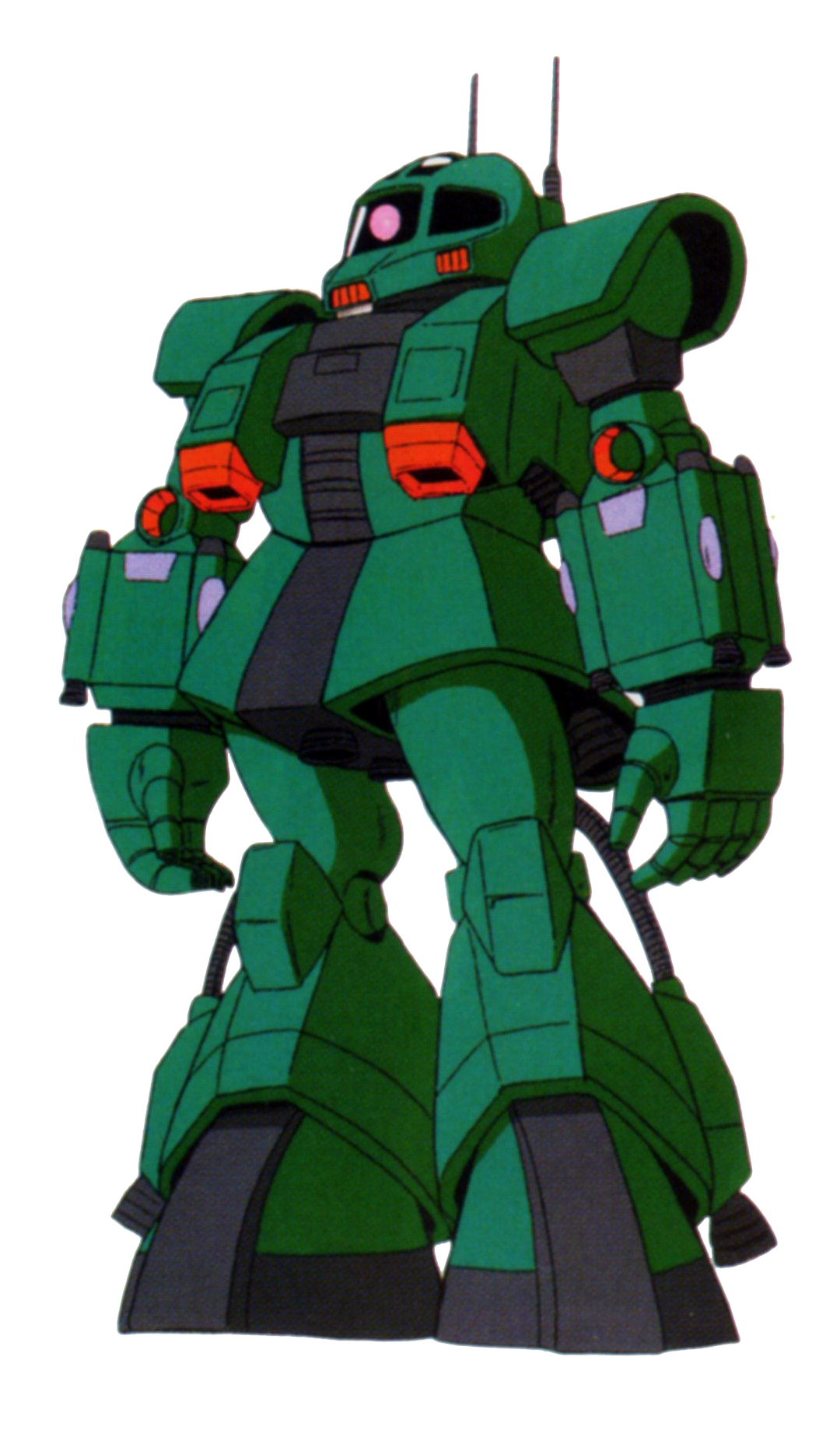MS-06Z Bishop
(Psycommu System Zaku)
Gundam > Universal Century > Gundam Side Story: Missing Link > Principality of Zeon mecha

The MS-06Z Bishop, also known as the Psycommu System Zaku, was a prototype Newtype-use mobile suit produced by the Principality of Zeon.
The “MS” in the model code meant it was a mobile suit. The “06” meant it was the sixth mobile suit line produced by Zeon, the MS-06 Zaku II line. The “Z” indicated it was a variant designed to test the psycommu system.
Production overview
Model number: RX-105
Code name: Ξ Gundam
Type: Prototype general purpose mobile suit
Completed: Unknown
First deployment: April UC 0105
Manufacturer: Anaheim Electronics
Operator: Mafty
Developed from: RX-104FF Penelope
Developed into: None
Variants: None
General characteristics
Crew: Pilot only
Cockpit: Panoramic monitor with linear seat cockpit in torso
Head height: 26.0 m
Total height: Unknown
Empty weight: 32.0 t
Gross weight: 80.0 t
Armour: Gundarium alloy
Sensors: Standard
Sensor range: Unknown
Performance
Power plant: Minovsky type ultracompact fusion reactor
Power output: 3.980 kW
Propulsion: 160,000 kg total
Flight system: 2 x Minovsky Flight Unit
Max speed: Mach 2
180° turn time: Unknown
Thrust-to-weight ratio: Unknown
Equipment
Fixed
- 2 x vulcan gun
- 2 x beam sabre
- 1 x shield
- 10 x funnel missile
Handheld
- 1 x beam rifle
History
During the One Year War, researchers at the Flanagan Institute discovered that Newtypes emitted powerful thought waves. The invention of the psycommu system to tap on these thought waves to control computers unlocked new frontiers in science and technology.
The Principality of Zeon command wanted to implement the technology in mobile suit warfare to give their Newtype pilots the upper hand in the War. The Bishop Plan was a development program with the goal of producing mobile suits equipped with psycommu system. Zeon engineers first tested adding the psycommu system to the MS-06 Zaku II frame to create the YMS-06Z Psycommu Early Test Type Zaku.
Following the success of the unit, they modified three MS-06F Zaku II units into the Bishop for further field tests. These underwent tests in the Corregidor Zone, where the Ace Corps also tested the MS-14A Gelgoog. An Earth Federation patrol fleet destroyed one of the Bishop units.
Annerose Rosenheim of the Marchosias Regiment piloted a fourth Bishop unit in the battles of Solomon and A Baoa Qu. Zeon built this unit from spare parts to tap of her Newtype abilities.
However, the addition of the bulky psycommu system led to unsatisfactory test results, especially in terms of mobility and energy consumption. The system had such a high energy drain that the Bishop could only operate for 10 minutes. Thus, Zeon developed the the MSN-01 Psycommu System Zaku with high mobility and energy efficiency in mind.
Design
The Principality of Zeon embarked on the Bishop Plan to create psycommu-equipped mobile suits for Newtype -use. Using the successful MS-06 Zaku II frame as the foundation for the experimental unit, Zeon engineers developed the YMS-06Z Psycommu Early Test Type Zaku by incorporating the psycommu system in the mobile suit for Newtype use. When the test unit proved successful, they proceeded to develop the MS-06Z Bishop for further field tests.
A Minovsky type ultracompact fusion reactor powered the mobile suit. Like the Zeon mobile suits of its time, it had super hard steel alloy armour.
Since it used a Zaku frame, the Bishop had a standard cockpit with linear seat in its torso. It had a set of custom sensors that boosted its detection range through they psycommu system.



Armaments
The Bishop was equipped with fixed ranged weapons and used its hands for melee combat.
Five-barrel mega particle cannons
Each of the Bishop’s ten fingers had a mega particle gun built into them. This made each forearm a five-barrel mega particle gun that could be detached from the body and operate remotely. The forearms had thick wires to control them while they were separated from the mobile suit. These had four verniers for positioning.
The five barrels on each hand were fire-linked. The fingers could be manipulated to vary the angle of fire, giving the mobile suit a flexible spread of firing range that made it difficult to dodge the mega particle beams.
Known pilots
Behind the scenes
Kunio Okawara was the original mechanical designer and the design appeared in Mobile Suit Variations. Kyoshi Takigawa designed the version in Mobile Suit Gundam Side Stories.
